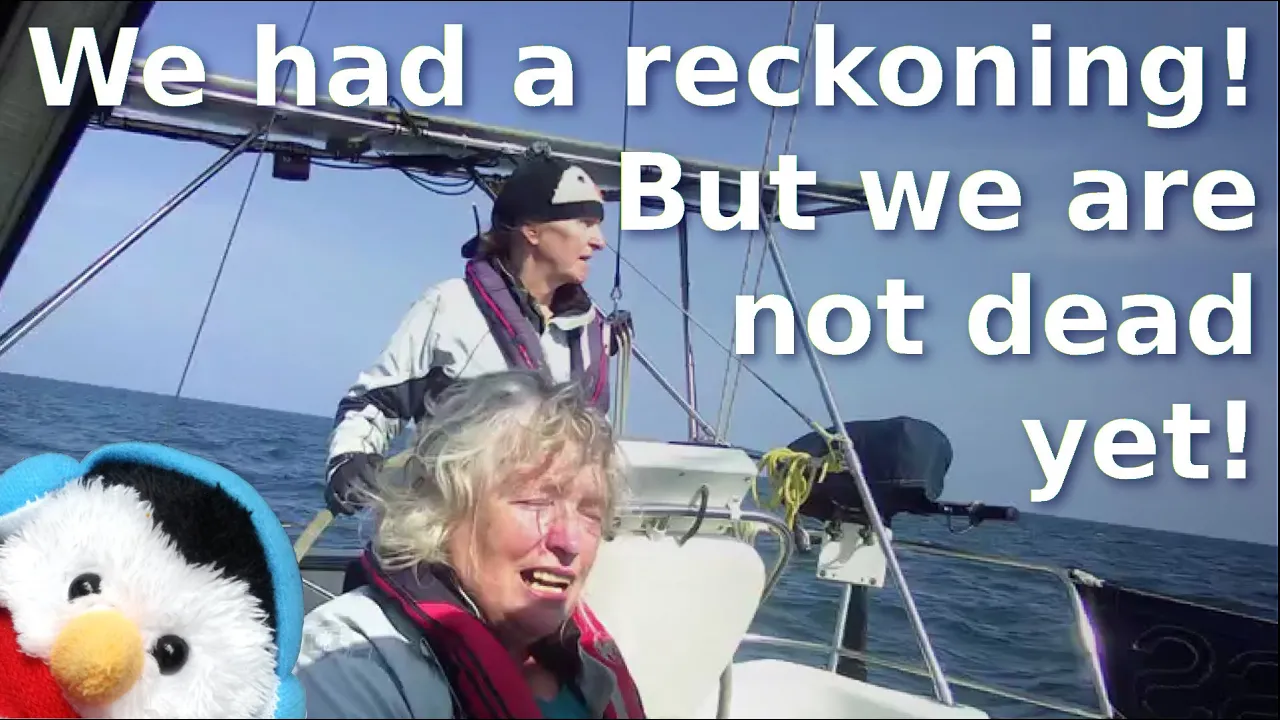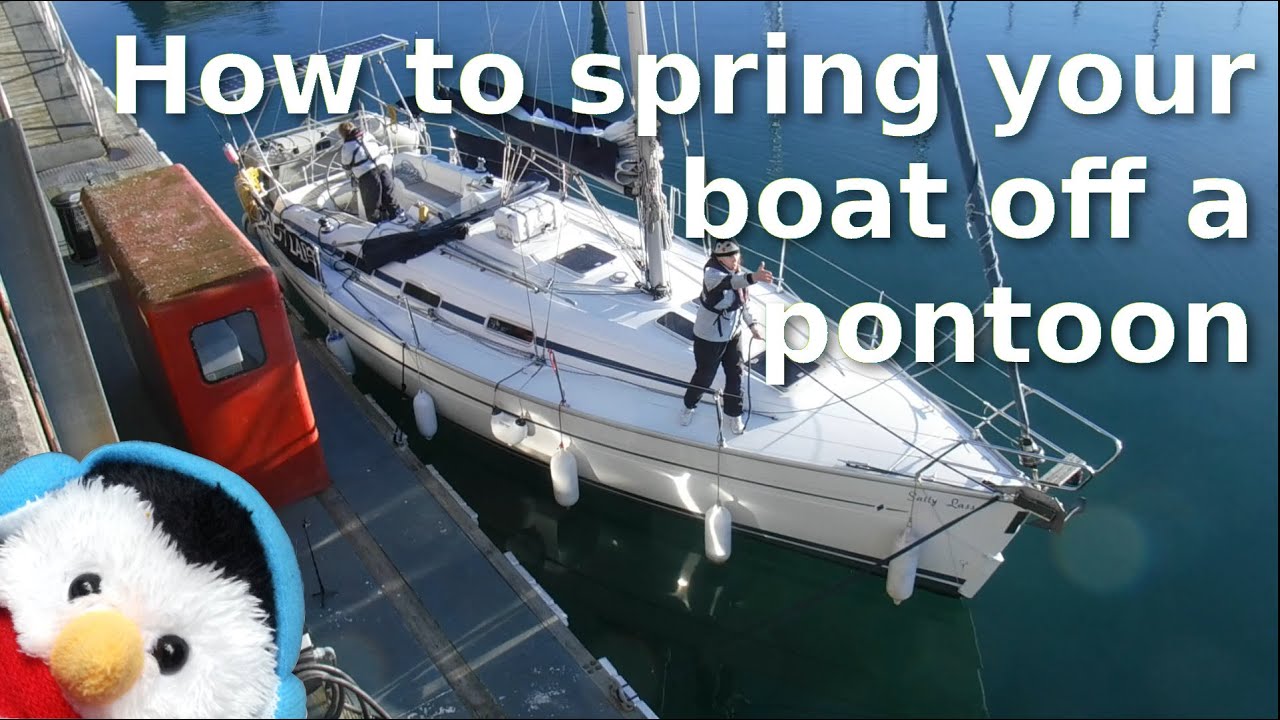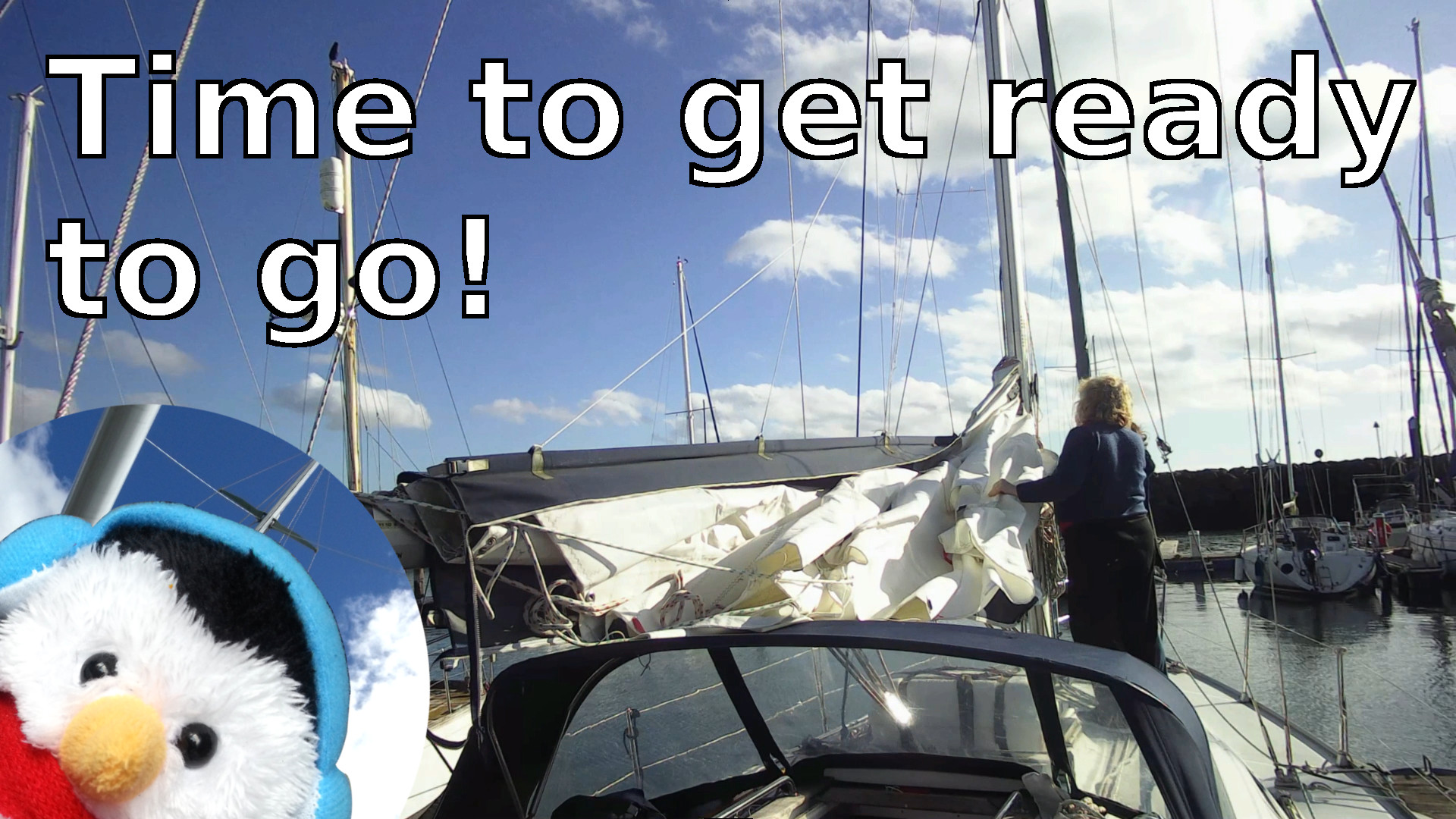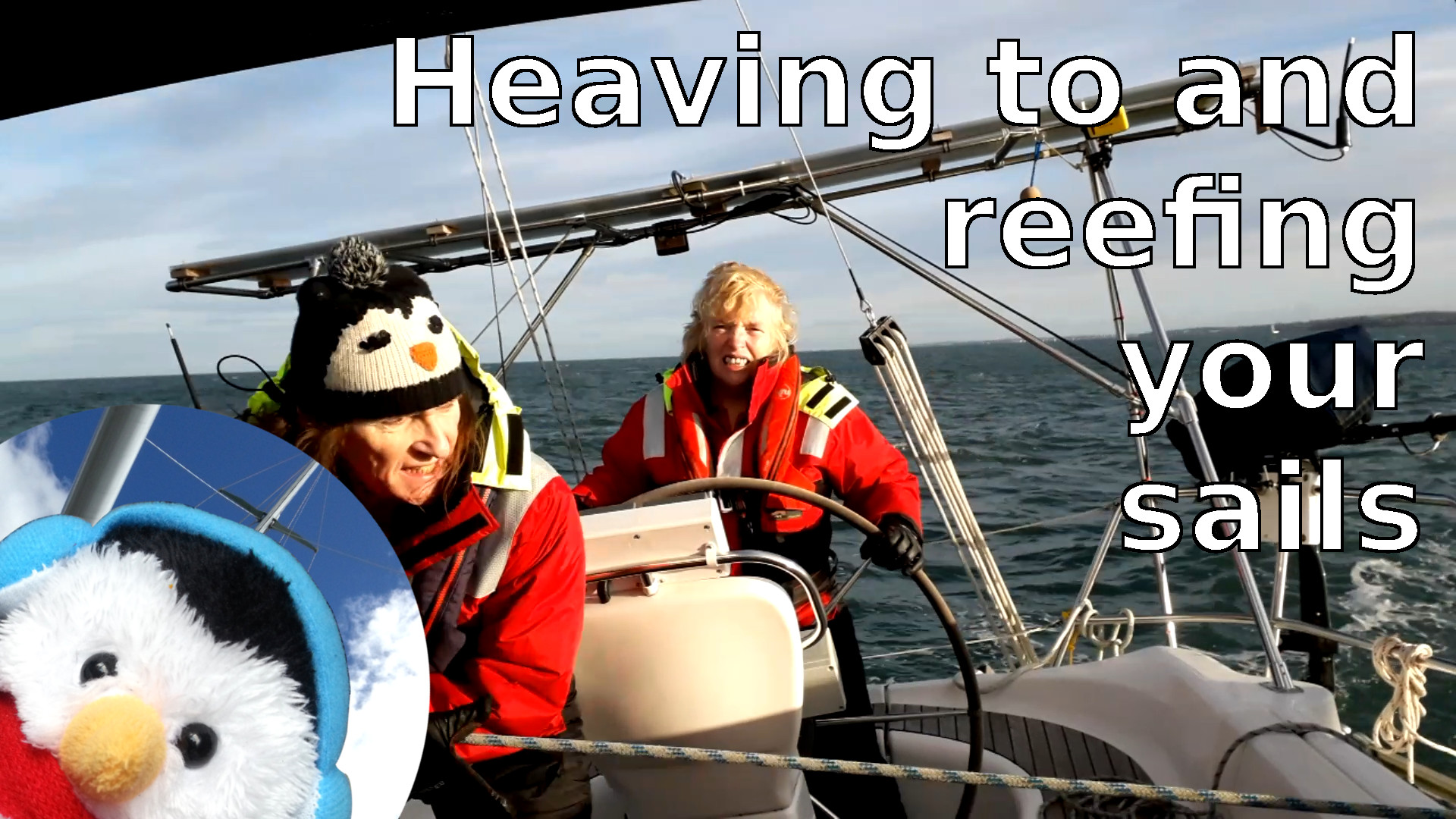There are several types of compass on Salty Lass, so as part of our Yacht master training I thought that I would write about all the different compasses on Salty Lass and how we have used them
Types of compass
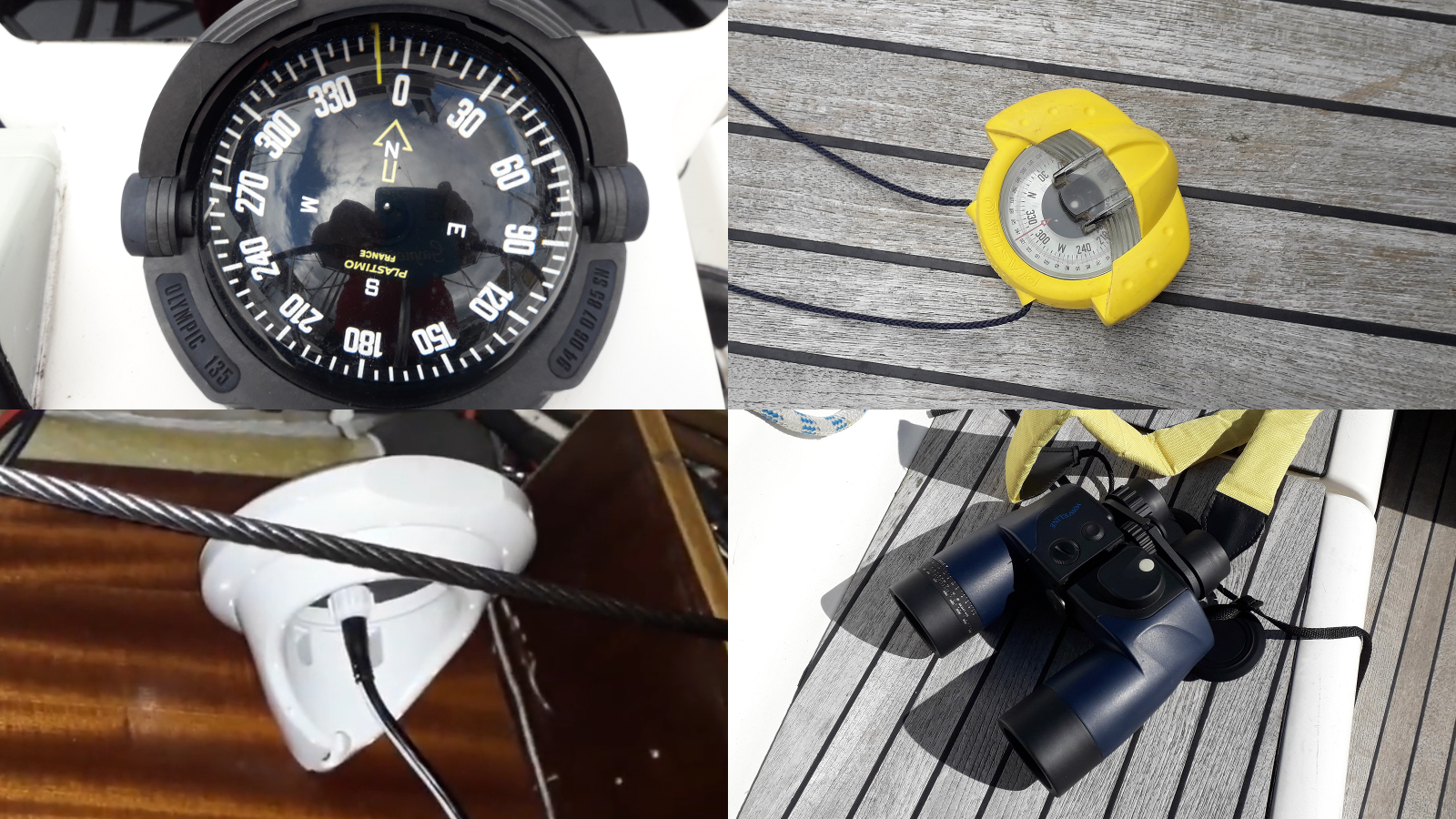
Steering Compass
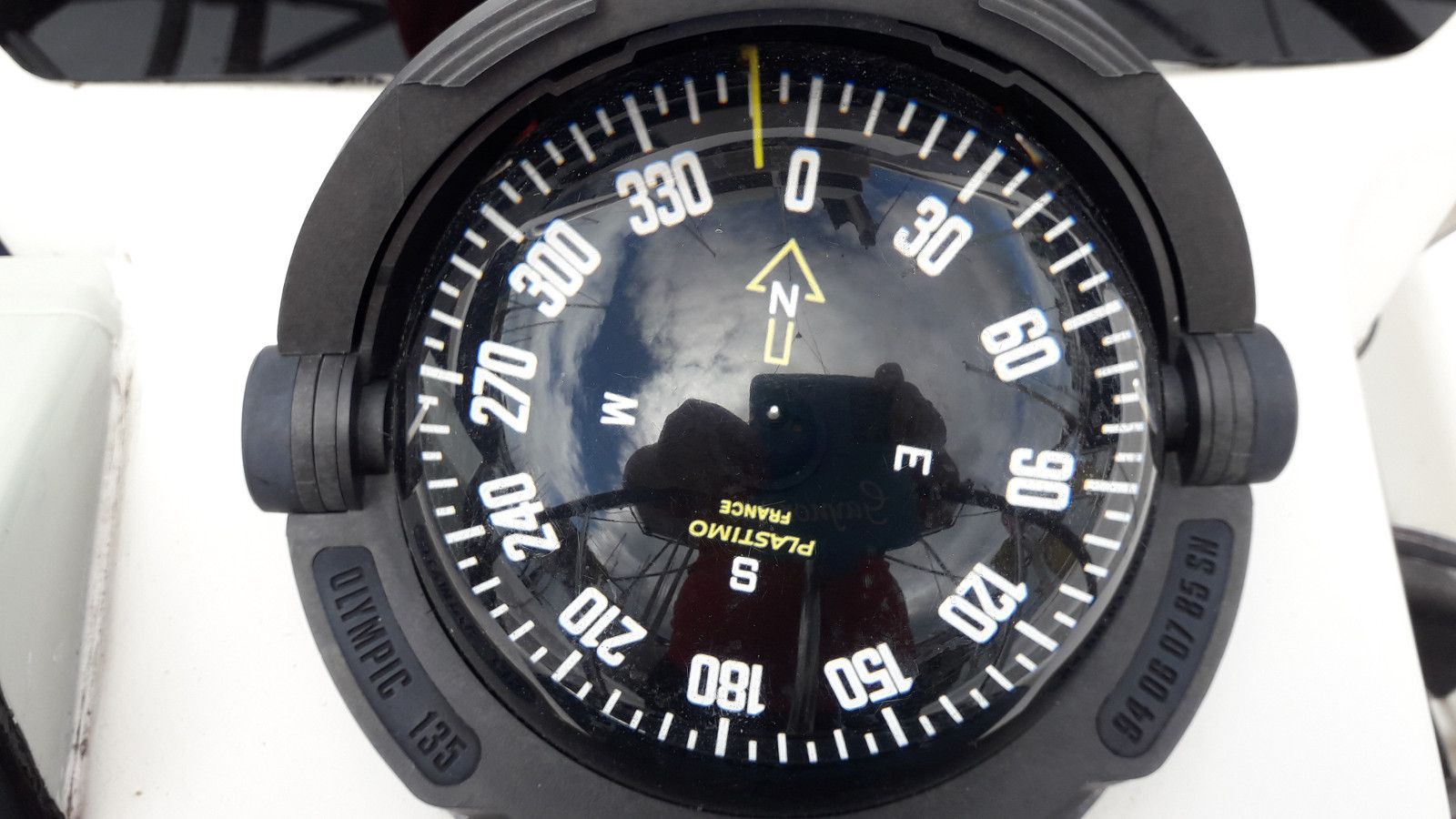
On Salty Lass this is housed in our steering pedestal just behind the steering wheel. The markings on the compass are every 5° so if we were forced to use this compass alone, then the best we could steer is to a accuracy of 2.5° so we could steer a course of 25°, 27.5° and 30° but to steer to something like 256.2° is just silly.
Lubber lines
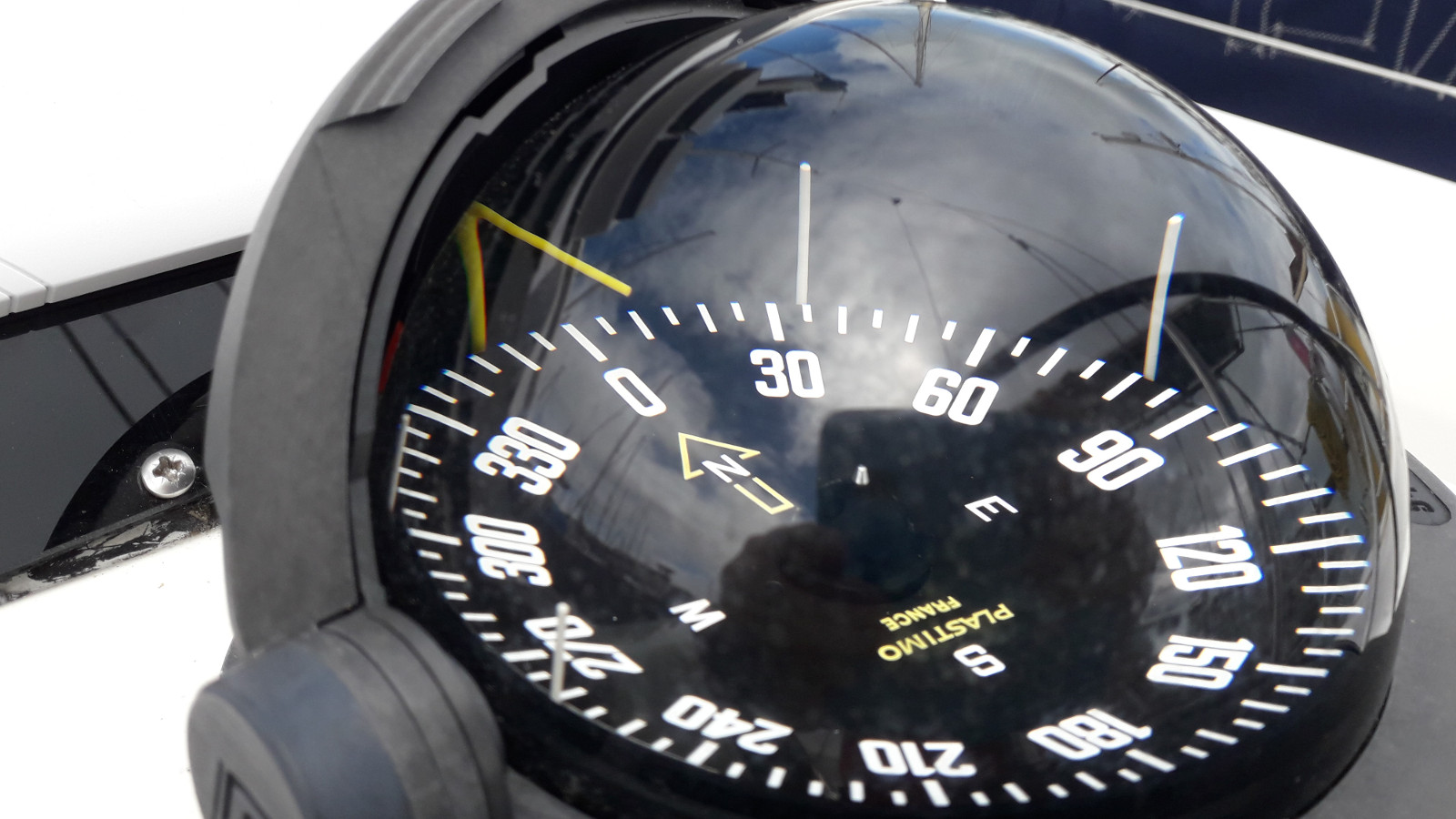
The yellow and the white lines are fixed lines on the compass and are called lubber lines. The yellow lubber line marks our current bearing. In addition to the yellow line, there are two white lines that are at ±45° and ±90°. If you are fortunate enough to be able to sail close hauled at 45° then you can use these lubber lines to find your next tack line.
Hand Bearing Compass
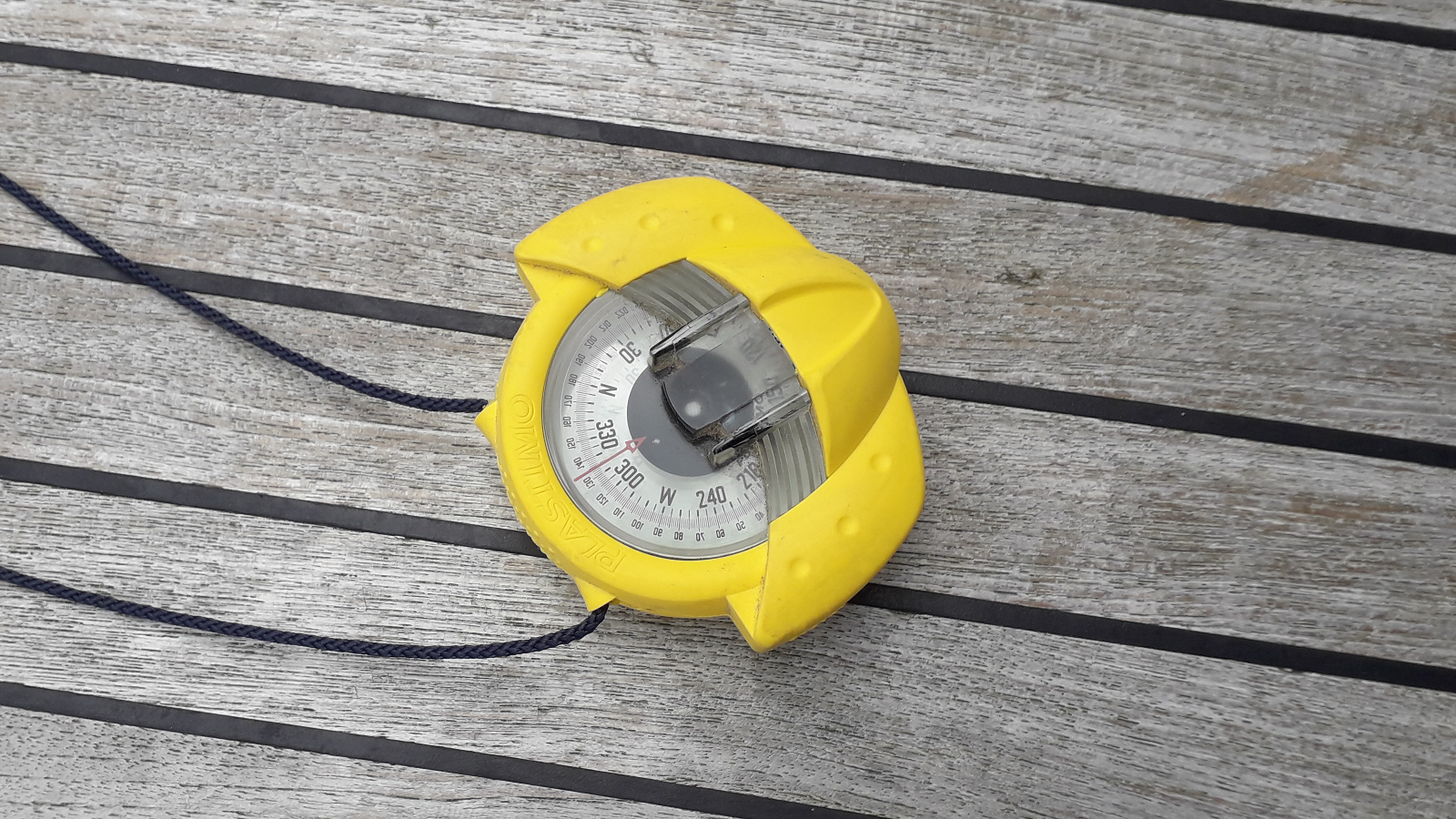
The hand bearing compass is a useful item as it is portable and allows you to take a bearing from wherever you are. This compass has minimal damping so when Salty Lass is moving, we need to brace ourselves using the spray hood or the steering pedestal to reduce the movement of the compass.
Infinity prism
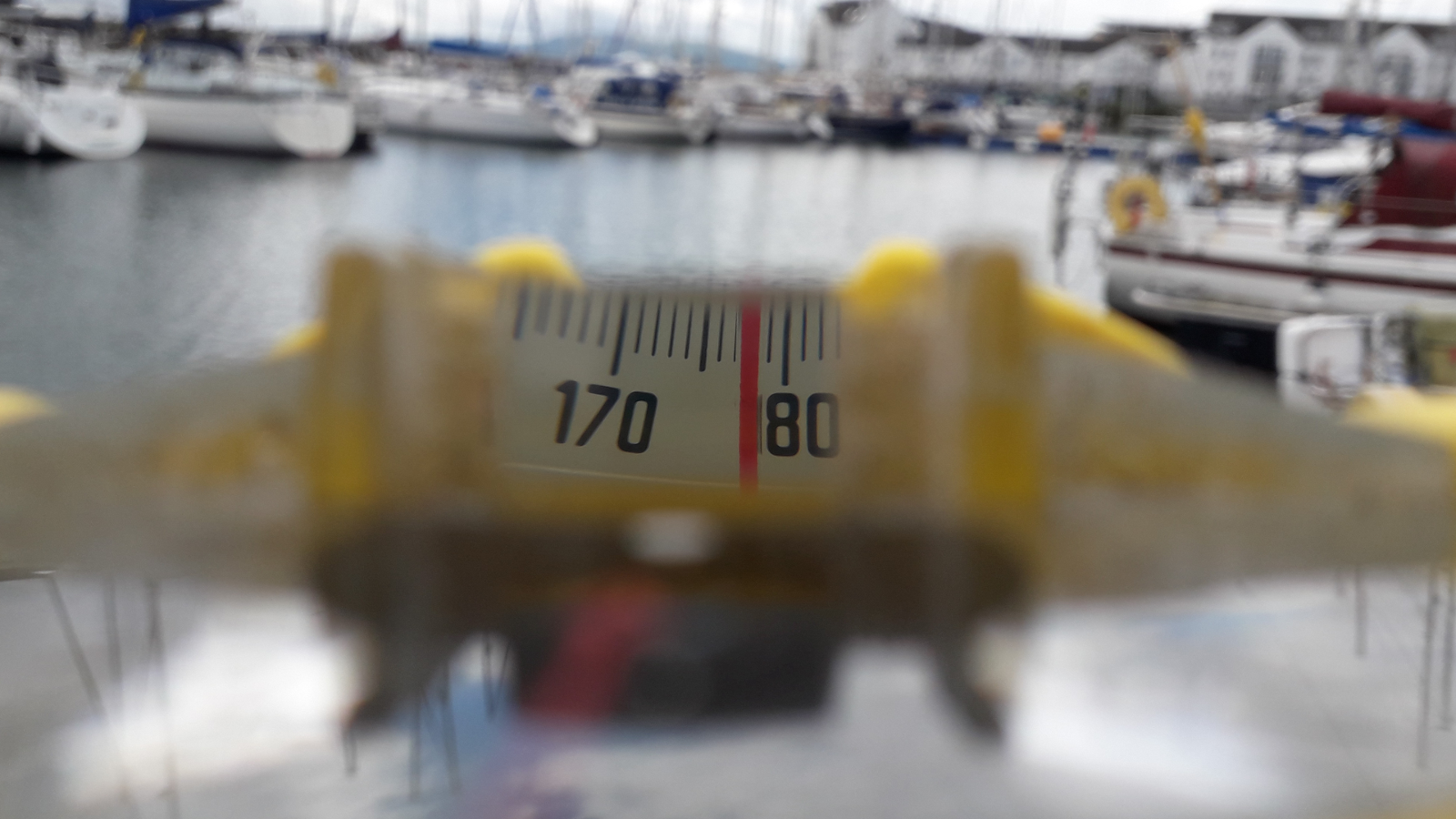
When purchasing a hand bearing compass you need to look for one that includes an infinity prism as this makes taking the bearing very easy.
You will also note that the markings of this compass are at every 1° so is more accurate than our steering compass, but due to the lack of damping in the compass, then it can be very difficult to get an accurate fix.
Fluxgate compass
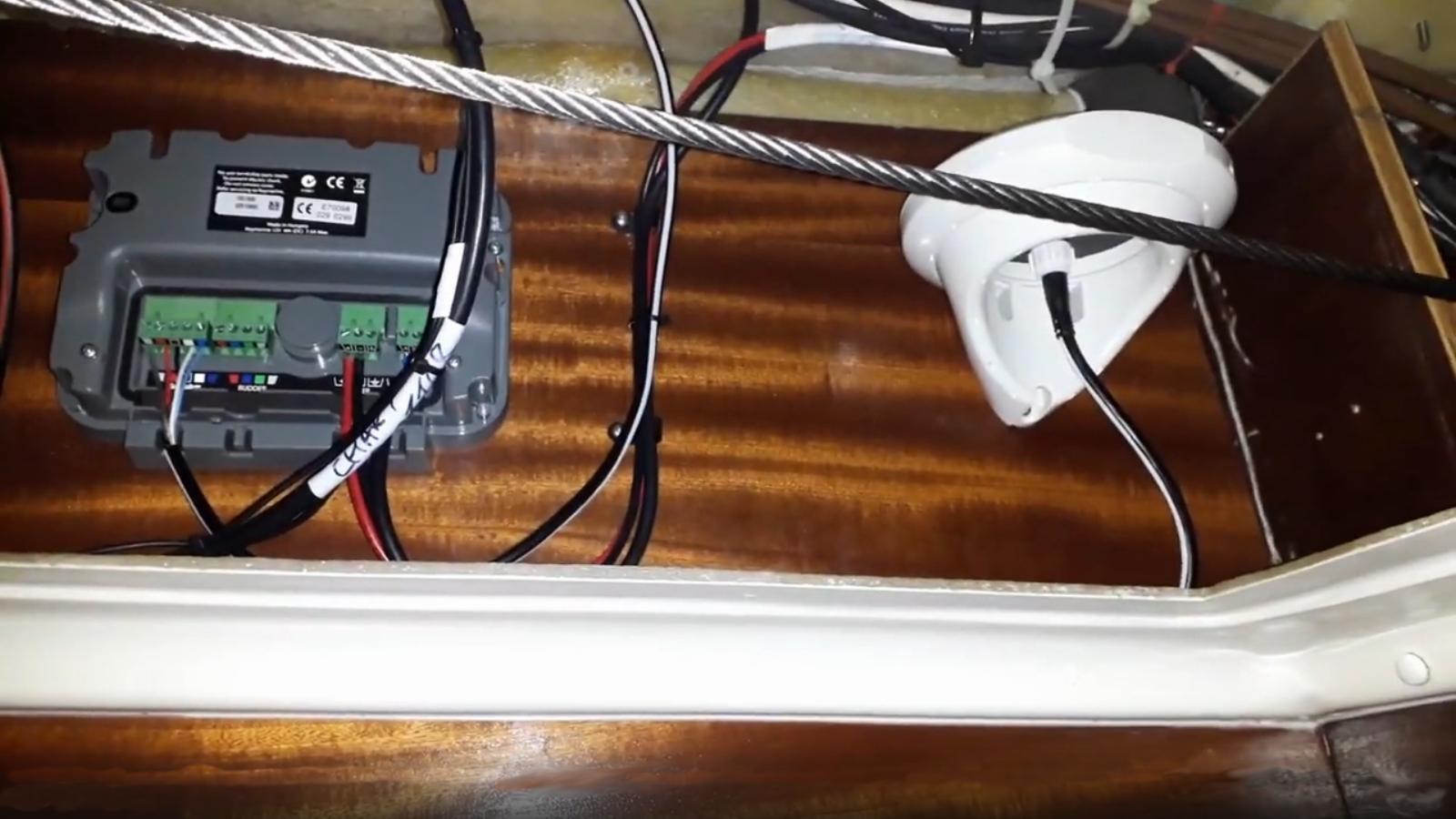
This can detect the Earth's magnetic field, by using two coils inside the device. They are very accurate because once that are calibrated they will automatically compensate for your boat's deviation. However, we have found that ours, which is a Raymarine EV1 Sensor Core, can loose its bearing every now and then so we need to re-calibrate it by turning around in circles at just over 3knots.
Binoculars
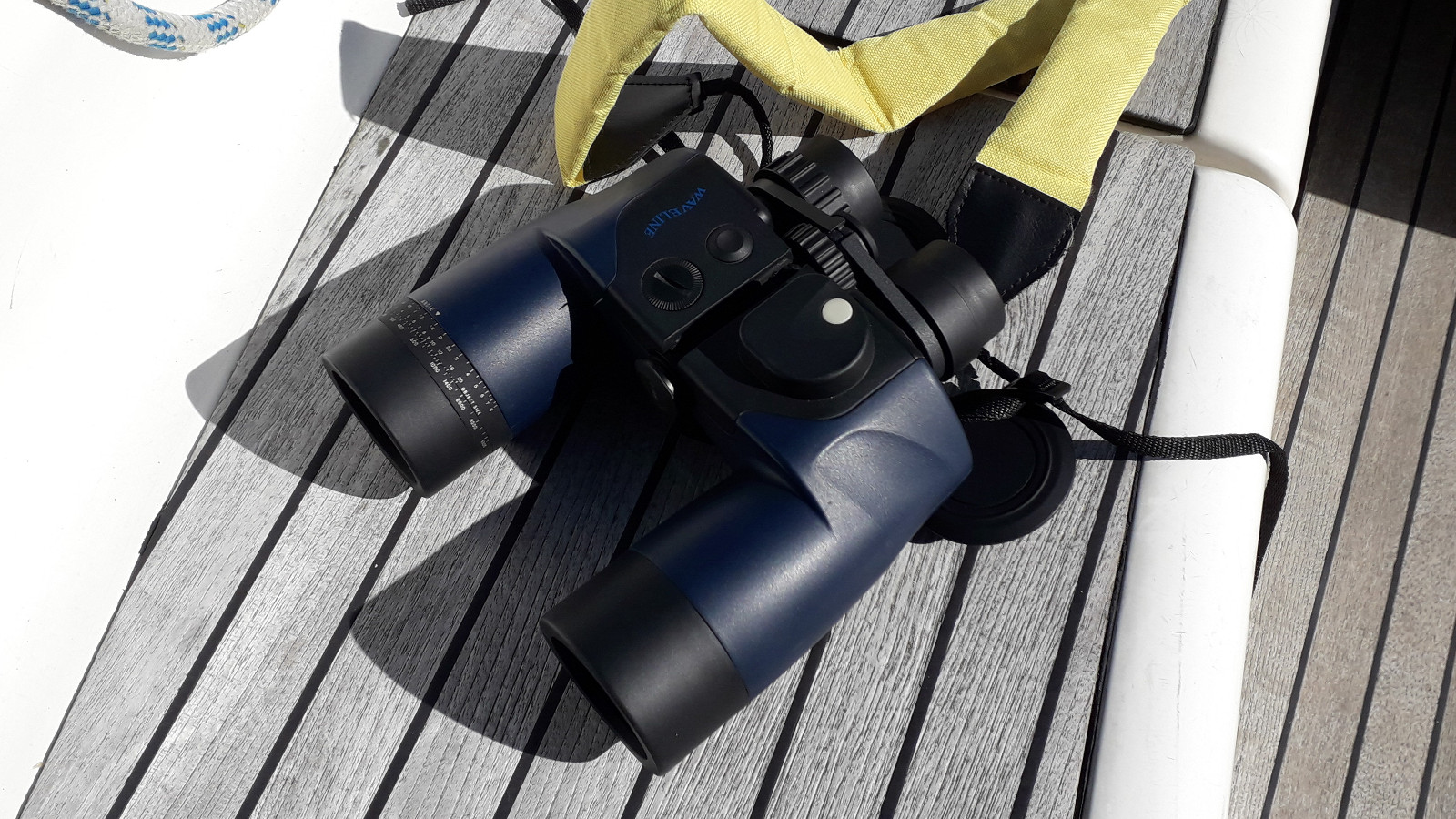
We have a well damped compass inside our binoculars so these are great for taking a bearing. They are quite heavy so we still need to brace ourselves against the spray hood, but in this case to help with the weight of the binoculars.
Inside our binocular eyepiece
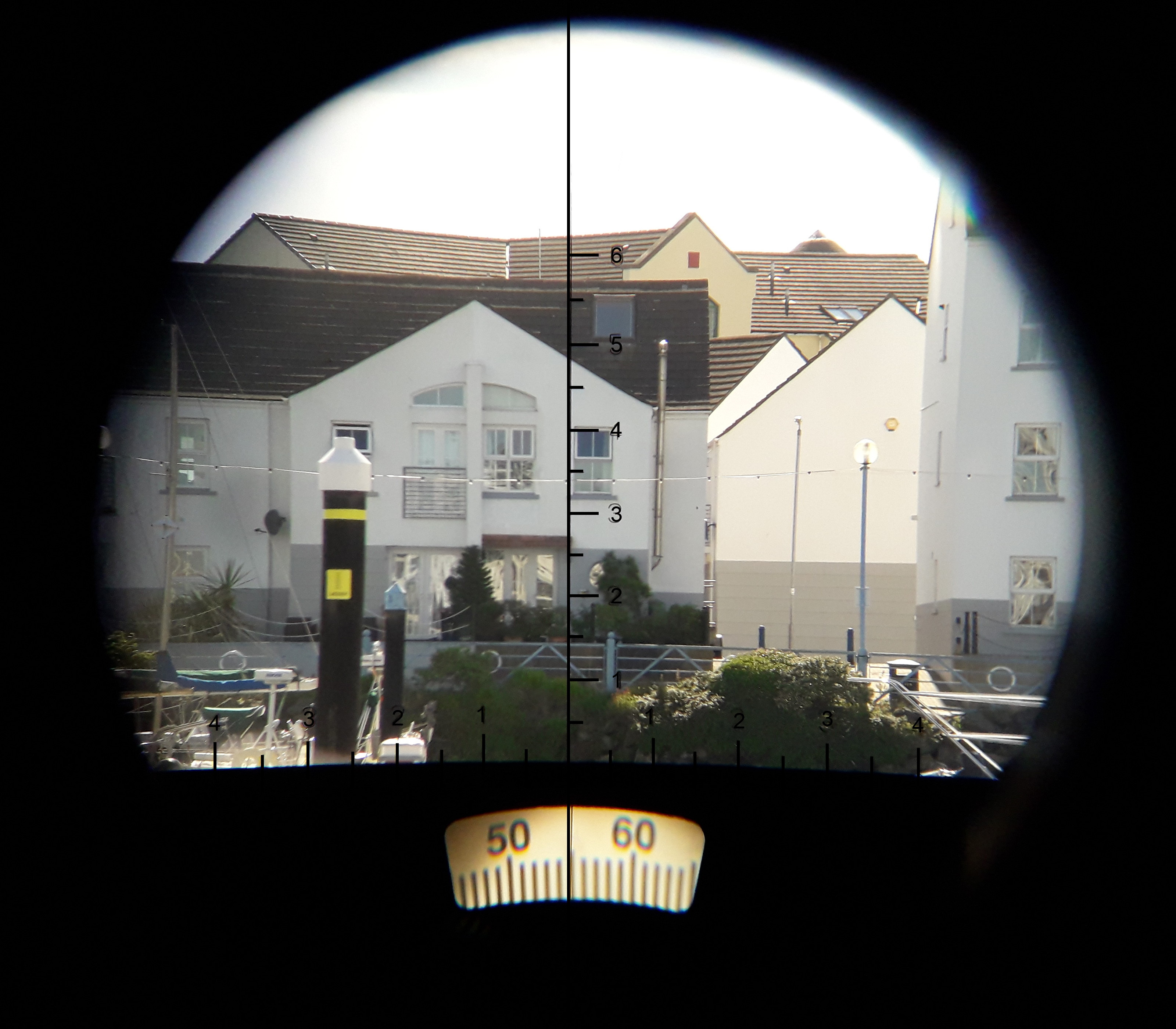
In addition to the compass reading at the bottom of the view, you can see a scale inside the eyepiece which allows you to calculate the distance to a particular object.
For example - With our binoculars we can look at an object for which we know the size. There are lots of these marked on our charts or chart plotter. With the bottom of the object at the 0 mark we look at how many full marks the object is. We can now rotate the dial closest to the word ANGLE on the outside of the binoculars to read the number we have.
Outside dials
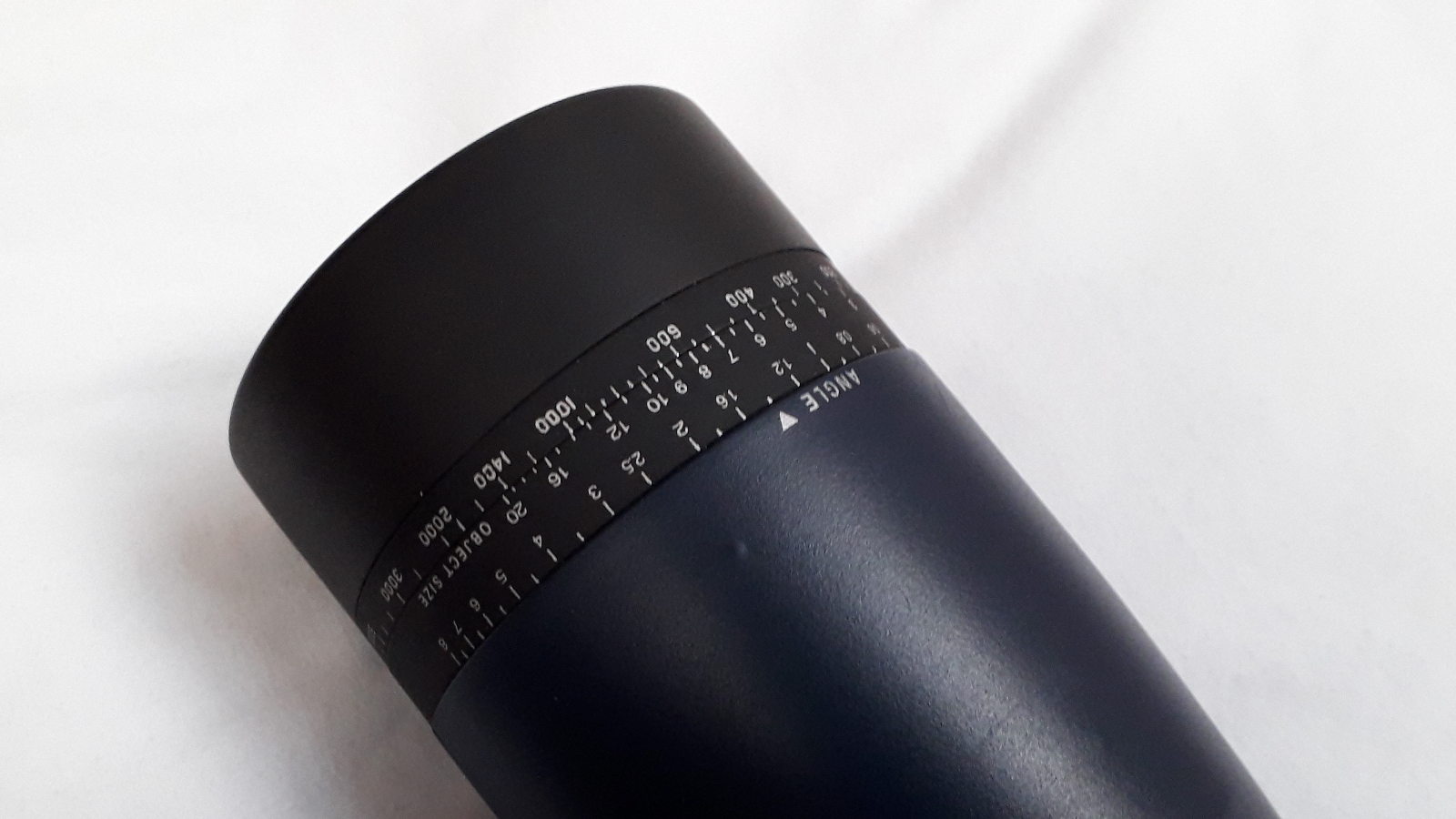
We now look for the size of the object and read off the distance which is on the dial furthest away from the word ANGLE. If we use these binoculars to look at a particularly large chimney like Kilroot chimney at 205metres in height we just use the 20 mark and multiply the distance by 10.
There are occasions when you might need to calculate the height of the object. So for this you need to know the distance to the object, which you can use your chart plotter for. You then dial the scale closest to the word ANGLE to what you can see, so this will give the height opposite the distance.
Land Compass
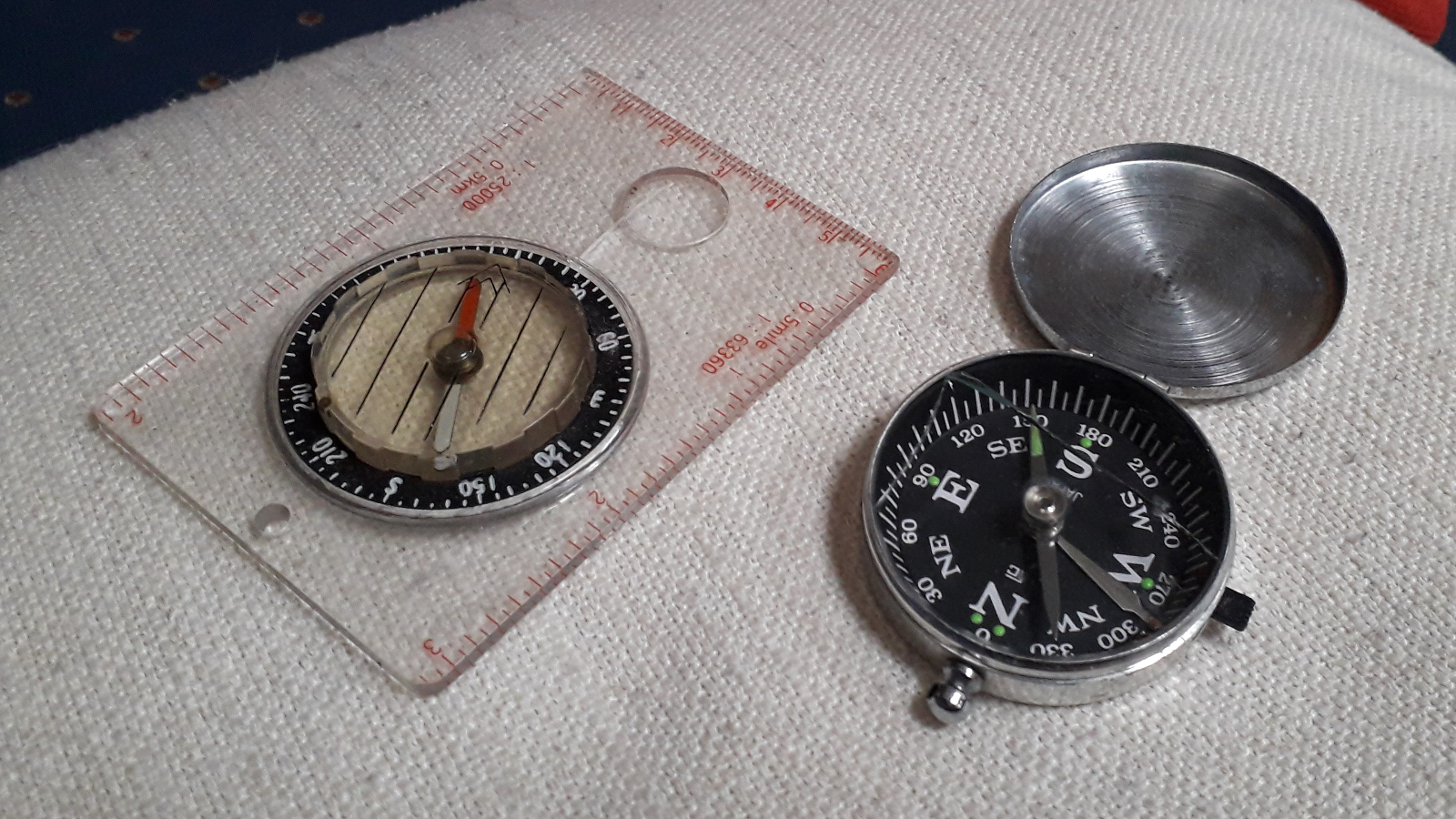
We also have a selection of land compass. We have on occasion used these for looking for magnetic anomalies in the Lass.
Other stories from Yachtmaster
- 2018
- 2019
- 2020
- 2021
- 2022
- 2023
- 2024
- 2025
- Anchor
- Boat Buying
- Boat Projects
- Charity
- Dinghy
- Disaster
- Electrics
- Engine
- England
- Events
- Food
- Fun
- Harbour
- How tos
- Isle of Man
- Maintenance
- Marinas
- Miscellaneous
- Mooring Balls
- Navigation
- Northern Ireland
- Not Sailing
- People
- Plumbing
- Safety
- Scotland
- Southern Ireland
- Wales
- Yachtmaster




